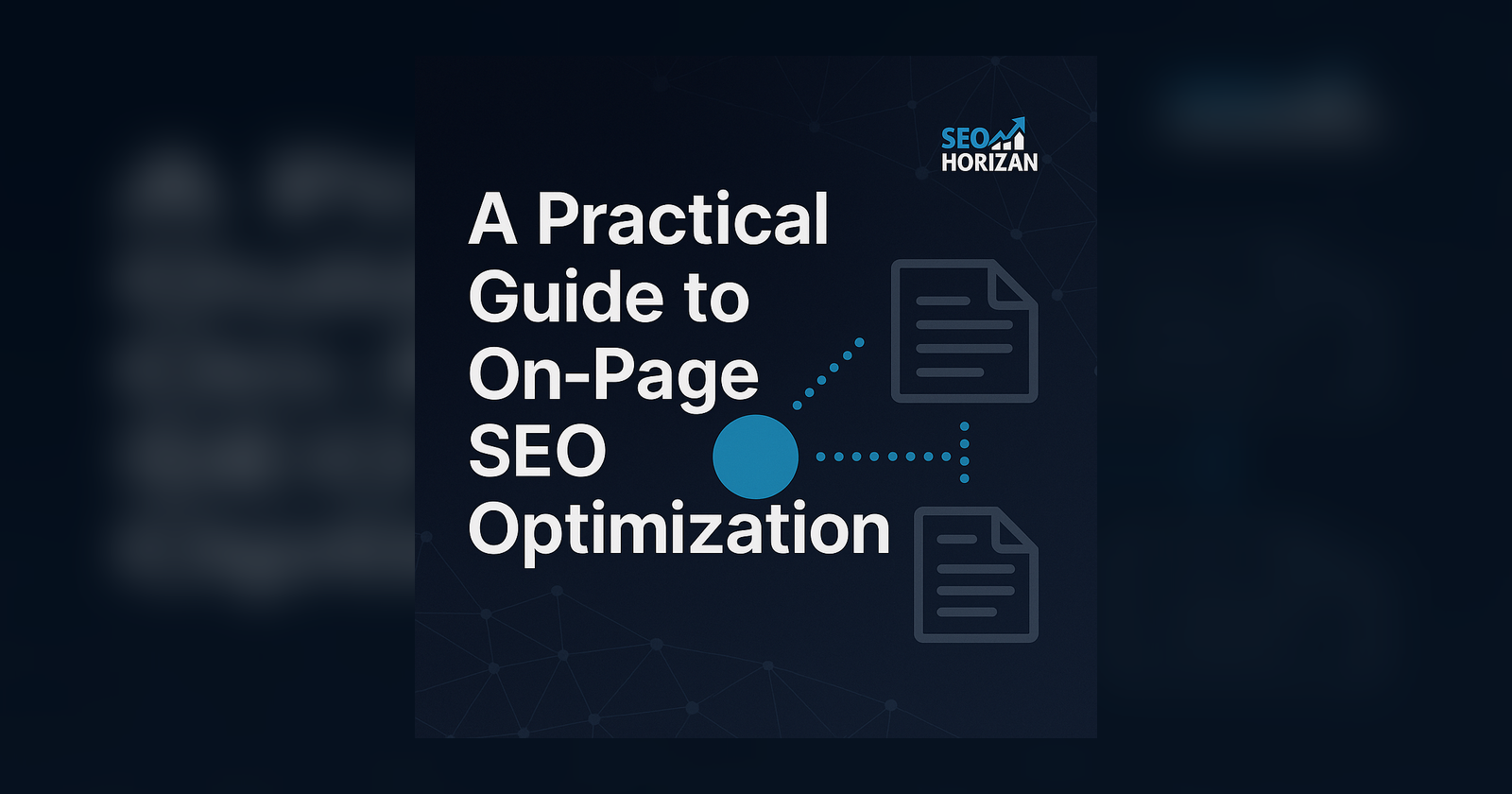Learn how to craft title tags that rank and win clicks. This hands-on guide covers length, keywords, templates, testing, and industry-specific examples—plus internal links to related on-page SEO resources for deeper crawling.
A Practical Guide to On-Page SEO Optimization
Introduction
On-Page SEO is the foundation of every successful digital presence. It’s not about tricking Google — it's about communicating your value clearly and efficiently to both search engines and users. In this practical guide, you’ll learn the key techniques, examples, and tools that will help your pages rank higher and perform better in 2025.
1. Start with Strong Keyword Research
Every optimization starts with understanding what your audience is searching for. Use tools like Google Keyword Planner, Ahrefs, or SEO Horizan’s internal audit reports to find high-intent, low-competition keywords.
- Focus on long-tail phrases that match user intent.
- Group keywords into topic clusters for better internal linking.
- Include variations and semantic keywords naturally.
Example: Instead of targeting “SEO tips,” try “practical on-page SEO tips for small businesses.”
2. Perfect Your Meta Tags
Meta titles and descriptions are your first impression in the SERPs. A clear, keyword-optimized title boosts click-through rate and helps Google understand your page focus.
- Title Tag: Keep it under 60 characters. Include your main keyword near the beginning.
- Meta Description: Write 150–160 characters summarizing your content with action words.
- Add your brand name at the end (e.g., | SEO Horizan).
Example: “A Practical Guide to On-Page SEO Optimization | SEO Horizan”
3. Optimize Headings and Structure
Headings (<h1>–<h3>) guide both readers and search engines. Each page should have one H1, clear subheadings (H2/H3), and consistent hierarchy.
- Use H2s for main sections like “Meta Tags” or “Internal Linking.”
- Use H3s for examples or explanations within each H2.
- Include keywords where natural, not forced.
4. Improve Content Readability
Readability affects engagement and dwell time — both critical SEO signals. Keep paragraphs short, use active voice, and mix sentence lengths for rhythm.
- Keep paragraphs between 2–4 lines.
- Use bullet points, numbers, and bold highlights.
- Insert visuals (infographics, screenshots, or charts) every 400–500 words.
Tip: Tools like Hemingway App or Grammarly can help optimize for clarity.
5. Image Optimization & Alt Text
Images boost engagement — but unoptimized visuals slow down your site. Compress them with TinyPNG or Squoosh and use descriptive file names.
- Include target keywords in alt text naturally.
- Use next-gen formats like
.webpfor faster loading. - Add width and height attributes to avoid CLS shifts.
Example: alt="on-page SEO optimization audit example by SEO Horizan"
6. Strengthen Internal Linking
Internal links guide both users and crawlers. They spread link equity and signal content relevance. Use contextual anchor text, and link to both high-authority and new pages.
- Ensure each page receives at least 2–3 internal links.
- Use semantic relationships, not just exact keyword matches.
7. Boost Page Speed and Core Web Vitals
Google’s ranking systems reward sites that load fast and offer great UX. Focus on optimizing Core Web Vitals: LCP, CLS, and INP.
- Minimize JavaScript and CSS.
- Use lazy loading for images.
- Enable caching and compression (Gzip/Brotli).
- Choose a fast hosting server (SEO Horizan recommends Hostinger VPS).
8. Add Schema Markup
Schema markup helps Google understand your content’s purpose — whether it’s an article, FAQ, or product. Use JSON-LD structured data for maximum impact.
- Common types: Article, Breadcrumb, FAQPage.
- Improve click-through with rich snippets.
9. Mobile Optimization
Over 70% of users browse via mobile. Make sure your pages are responsive, legible, and fast across all screen sizes.
- Use mobile-first design principles.
- Keep tap targets large and well-spaced.
- Avoid intrusive pop-ups and oversized images.
10. Measure and Refine Continuously
On-Page SEO is an ongoing process. Use analytics to identify what’s working and where improvements are needed.
- Google Search Console: Track impressions, clicks, and CTR.
- SEO Horizan Dashboard: Monitor on-page audit scores and keyword performance.
- Heatmaps (Hotjar/Clarity): Understand how users interact with your content.
Conclusion
A strong On-Page SEO strategy is built on data, consistency, and clarity. Start small — optimize titles, structure content, improve speed — and measure the difference. Remember: SEO isn’t just about ranking; it’s about creating a better experience for every visitor.
Pro Tip: Run a free On-Page Audit on SEO Horizan to identify optimization opportunities instantly.
SEO Performance Insights
- ⚠️ Needs technical markup & backlinks — Implement structured data (Article, FAQPage) and earn contextual backlinks to boost authority.
- 🚀 High potential to rank Top 5 for “on-page SEO optimization guide 2025” — Maintain fresh updates and promote through social and internal linking.
Frequently Asked Questions (FAQ)
What is On-Page SEO?
On-Page SEO refers to optimizing elements on your website — like titles, meta descriptions, internal links, and content — to improve search rankings and user experience.
Why is schema markup important for SEO?
Schema markup helps search engines understand your content better and can generate rich results such as FAQs, star ratings, and article previews in Google Search.
How can I improve my Core Web Vitals?
Optimize images, use lazy loading, enable caching, and minimize JavaScript to enhance Core Web Vitals metrics like LCP, CLS, and INP.
